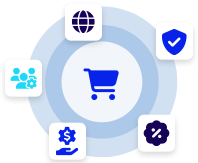The Waterfall Model is a linear software development methodology often used within the software development lifecycle (SDLC). It is one of the oldest and most straightforward methodologies in software engineering and product development, breaking the process into distinct, sequential phases.
Each phase in the Waterfall Model needs to be completed before moving to the next, which makes it different from iterative approaches that allow for more flexibility. By following a rigid, step-by-step approach, the Waterfall Model provides clarity and structure, ideal for projects with clearly defined requirements and minimal changes expected throughout development.
One of the primary benefits of the Waterfall Model is its organized flow. Since the process is divided into fixed phases, each step must be fully completed before progressing. This ensures that, when done correctly, each phase produces a clear output that informs the next, creating a reliable roadmap from planning to deployment.
Phases of the Waterfall Model
The Waterfall Model consists of seven key phases, each crucial to creating a fully functional software product:
- Requirements: In this initial phase, project requirements are gathered and documented. The aim is to understand what the product should achieve and what the end users expect, creating a foundation for the development process.
- Analysis: Here, the requirements are analyzed to ensure they are feasible within the project scope, resources, and timeline. This phase may involve risk assessment and refining requirements to outline a practical development path.
- Design: Based on the requirements, developers create a detailed software architecture or design plan. This plan includes system specifications and how each component will work together, setting up a blueprint for the coding phase.
- Coding and Implementation: In this phase, developers begin the actual coding of the product, implementing the design specifications from the previous phase. This step requires developers to work in line with the established requirements, ensuring the code aligns with both functionality and design.
- Testing: Once coding is completed, the product is rigorously tested for errors, bugs, and quality issues. Testing helps verify that the software functions as expected and meets the defined requirements.
- Operation and Deployment: After successful testing, the software is deployed to a live environment where it becomes operational. This stage marks the product’s official release and the start of user interaction with the software.
- Maintenance: The final phase involves ongoing maintenance to keep the software functioning optimally. It includes updates, bug fixes, and any necessary adjustments based on user feedback or changing requirements.
Pros and Cons of the Waterfall Model
The Waterfall Model offers clear structure and visibility, making it suitable for well-defined projects where requirements are unlikely to change. It provides a comprehensive record of each phase, which can be beneficial for documenting the entire development lifecycle.
However, its rigidity can also be a drawback. If requirements change mid-project, adapting the Waterfall process can be challenging and costly since there’s no built-in mechanism for returning to previous phases. This is why the Waterfall Model is often recommended for projects where goals and specifications are stable from the start.













